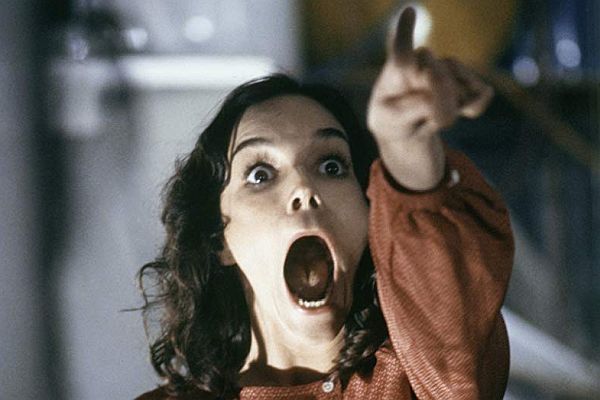The Momo hoax has annoyed me, and not merely because ‘momo’ are a particularly delicious type of dumpling I enjoy, and their name is now tainted. Even if the effects of the self-harm game on children had been at all credible, we humans as a group seem incapable of analysing the broader causes of these waves of anxiety and concern without acting like context-free amnesiacs.
I’m not setting myself up as a smugly superior, disinterested observer: I, too, worry about my children and ‘screen time’; I, too, place some limits on things and declare that they must go play outside for a certain amount of time; I, too, use parental controls for their devices and stare with some concern at the shouting YouTubers making slime and playing Minecraft. But it has helped me, in the throes of my middle-class guilt, to know that moral panics about children and technology, or children and popular culture, are a particularly common feature of mass media as it relates to modernity.
For at least one hundred and fifty years we have projected our concerns about incorporating technological and social change into our communities by worrying intensely about how these things will affect our children. ‘What about the children?’ and ‘think of the children!’ are mocking tropes for a reason. The youth will be corrupted in some way by these innovations. They will become addicted to something, or overly sexual, or criminals, or harm others, or (as in the case of Momo) harm themselves. Our social order will become disordered. We will cede control. Dystopian futures lie ahead.
The panics follow a standard pattern. So standard, in fact, that the academic theory on these issues goes back several decades. This is Chas Critcher, in a chapter in The International Handbook of Children, Media and Culture on the historical aspects of these debates:
A new medium, product of a new technology or a new application of an old one, emerges and finds a mass market. Its content is seen as criminal or violent or horrific. It constitutes a danger to children who cannot distinguish between reality and fantasy … It is stereotyped by other mass media, often the press. Moral guardians pronounce upon the evil. Experts concur in denouncing the injurious effects. Measures are put in place. The issue goes away, returns in another form or is replaced by a new one.
Here is a non-exhaustive list of cultural developments or technological inventions that have caused societal concern – often rising to the level of panic – about their effects on the welfare of youth or children, from the nineteenth century to the present:
- Novels (emotional corruption of young women, encouraging young men to lives of crime and laziness)
- Amusement parks (unchaperoned teens running riot)
- Private vehicles (more unchaperoned teens)
- Film (inducement to crime, sexual immorality, violence)
- Comic books (ditto)
- Contraception (uncontrolled sexuality)
- Television (all of the above, plus addiction and brain rot)
- Various musical genres: jazz, rock and roll, heavy metal, hip hop (sexual licence, delinquency, violence, suicide)
- Non-networked arcade or computer games (addiction, brain rot, violence)
- Social media, particularly YouTube (you know the drill by now)
And here is a slightly redacted quotation about one of the items listed above, from Fredric Wortham’s best-seller Seduction of the Innocent:
A social acquaintance asked me about his nephew: ‘My sister has a little boy. He [does thing] all the time. And I’ve seen him – it is all the time! He lives in one of those dream worlds. He’s always interested in [thing]. All his concentration goes to that. All his excitement comes from [thing]. He doesn’t even go out to play ball.’
The author could be talking about Fortnite, or YouTube, couldn’t they? But they’re talking about comic books. This work was published in 1954.
In this newspaper clipping from New Zealand’s Auckland Star, are you able to tell whether the author is referring to 2 Live Crew or Elvis Presley when it speaks of ‘torrents of erotic noise’?
The article is from 18 October 1937 and warns against the childhood-warping influence of jazz.
Also in New Zealand, the 1954 Mazengarb Report on juvenile delinquency – issued portentously to every household in the country – actively encouraged people to panic about a new medium before we even had it. The country got its first television station (state-run, with four hours of programming daily) in 1960:
Although television may not be introduced into New Zealand for some time, plans to cope with its effects on children should be made well in advance of its introduction.
Some of the fears taking hold of the public obviously reflect bigotry or prejudice. Primarily black art forms crossing over into white middle-class society freaks those people out. White American teens enjoying what was known as ‘race music’ in the 1950s caused open concern about ‘miscegenation’. There are class-based worries, too: things that the masses may enjoy will corrupt the middle-class children, bringing them down to some unspecified, undesirable working-class level of moral turpitude. The ongoing battle between words and screens, in which screens are always the villain, express middle-class conceptions of what ‘high culture’ is or should be. And gender-related anxieties are written all over these moral panics: the idea that contraception will free teenage girls from their fear of unwanted pregnancy and cause them to run riot sexually; or the worries that women (since women do more parenting than men) are wholesale neglecting and corrupting their children by outsourcing their supposed duties to screens, as evidenced by this 1948 clipping from the Lake County Mail:
The fears are that maternal feelings are diminished by new media and that the ‘pure’ (read: unpaid) caring work that women do will now be debased – by capitalism, by advertisers, by something associated with the exchange of goods for money.
More benign features of these panics relate to our completely understandable protective feelings and relatively recent ideas about childhood: what activities it should feature, what a child should remember about it, the state of innocence or purity to be safeguarded. The child is, we think, inevitably corrupted – how else does the child become an adult? – but this corruption can be delayed if only we stop all engagement with [thing]. Conversely, too much engagement with the technology or media craze of the moment creates a discourse of premature adulthood or, at worst, terrifying ‘not-children’ – the spectres of physical or mental decay. That is to say, addicts. Zombies. Unknowable creatures, distanced from us. Hostile to us. Witness a widely shared New York Post article from 2016 claiming that it is easier to treat heroin and crystal meth addicted than children who become obsessed with Minecraft, and the anecdote straight out of Invasion of the Body Snatchers used to illustrate the crisis:
She found him sitting up in his bed staring wide-eyed, his bloodshot eyes looking into the distance as his glowing iPad lay next to him. He seemed to be in a trance. Beside herself with panic, Susan had to shake the boy repeatedly to snap him out of it. Distraught, she could not understand how her once-healthy and happy little boy had become so addicted to the game that he wound up in a catatonic stupor.
The article follows the template to the letter, using the language and ideas of innumerable other media panics stretching back decades. You can swap out the technology or the popular culture and – give or take a few idioms or cultural references – we’re still singing from the same hymn sheet as our parents and grandparents. Just as speculative fiction dystopias comment on the anxieties we feel about our own, real societies, so do the panics we feel about children and technology reflect our own prejudices and our worries about ourselves.
Adult anxieties do serve a purpose on occasion. Children need to eat, and sleep, and be loved, and wear seat belts, and other such things. But the angst sweeping over Facebook and coffee groups and barbecues could do with a little more general interrogation and a little less widespread terror. To quote some guys at the centre of a moral panic a few decades ago: ‘just chill, ‘til the next episode’.
Image: Brooke Adams in the 1978 remake of Invasion of the Body Snatchers








